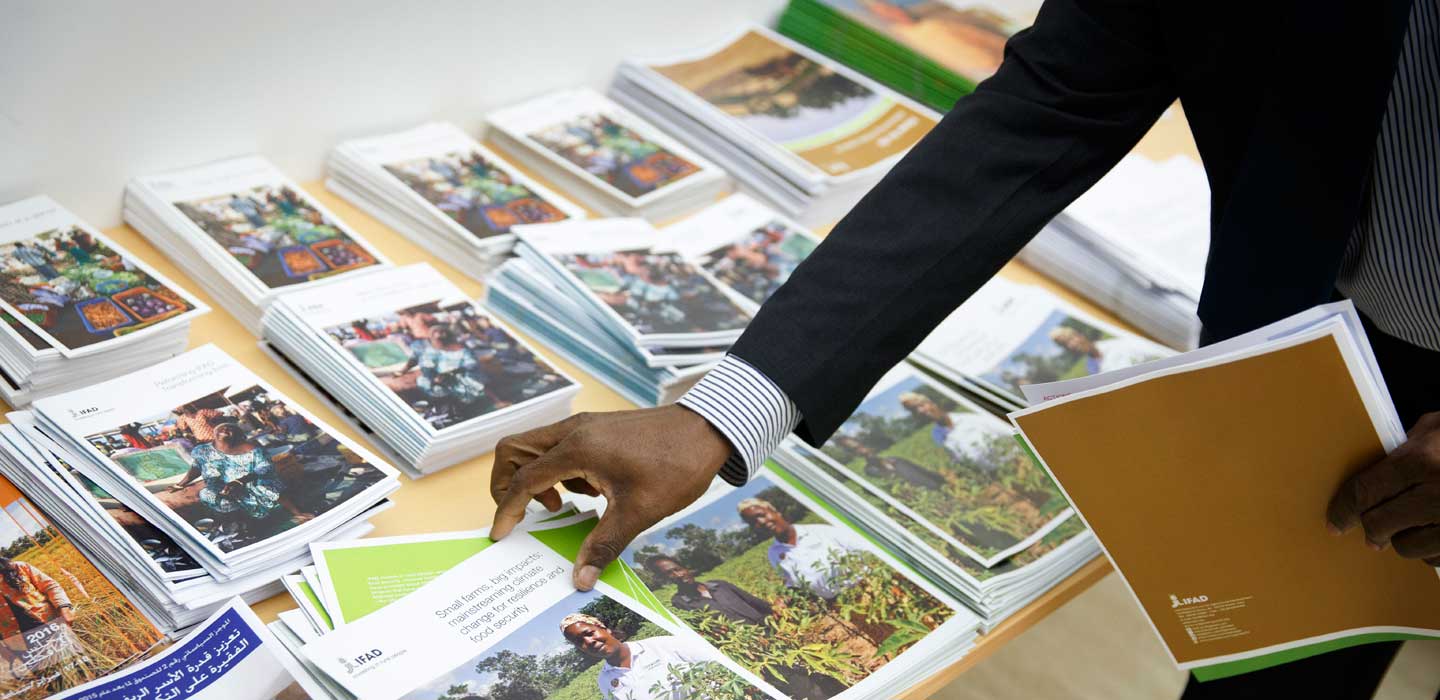Fichas Informativas

Fichas informativas
Visualización del menú
Search Results Filters
Resultados de la búsqueda
Grant results sheets - Inclusive growth, rural industrial policy and participatory value chains in Latin America and the Caribbean
Grant Results Sheet - ICRISAT: Sustainable Management of Cropbased Production Systems for Raising Agricultural Productivity in Rainfed Asia
Grant Results Sheet - APRACA: Enhancing access of poor rural people to sustainable financial services through policy dialogue, capacity-building and knowledge-sharing in rural finance
agroentrepreneurs, so they are better equipped to face emerging challenges and benefit from new opportunities.
Grant Results Sheet - ICIMOD: Improving livelihoods and enhancing resilience of the rural poor in the Hindu Kush Himalayas to environmental and socio-economic changes (AdaptHimal)
Grant results sheet - ROUTASIA: Strengthening Knowledge Sharing on Innovative Solutions Using the Learning Route Methodology in Asia and the Pacific – Phase 2
Grant Results Sheet: FundaK - The Outreach Project: Expanding and scaling up innovative financial inclusion and graduation strategies and tools in Africa
Invertir en la población rural del Perú
Grant Results Sheet: Integrated crop– livestock conservation agriculture for sustainable intensification of cereal-based systems in Central and West Asia and North Africa
Investing in rural people in Cameroon
Grant Results Sheet: CABFIN - Enhancing the CABFIN partnership’s delivery of policy guidance, capacity development and global learning to foster financial innovations and inclusive investments for agricultural and rural development
implement more effective interventions aimed at increasing access to rural and agricultural finance.
Grant Results Sheet: ICIPE - Scaling up biological control of the diamondback moth on crucifers in East Africa to other African regions
United Kingdom and IFAD
Remesas y redes de microfinanciación
a las zonas rurales. En el punto de partida de la cadena de la migración, las personas abandonan las zonas rurales para buscar oportunidades en otros lugares, ya que
carecen de ellas más cerca de su hogar. Las instituciones de microfinanciación (IMF) son insustituibles a la hora de atender las necesidades de los receptores de remesas
y reinvertir los fondos excedentes para mejorar las oportunidades de las comunidades locales.
Grant Results Sheet ILRI - Enhancing dairy- based livelihoods in India and Tanzania through feed innovation and value chain development approaches
The MilkIT research for development project set out to improve dairy-centred livelihoods in India and Tanzania through intensification of smallholder
production focused on enhancement of feeds and feeding using innovation platforms and value chain approaches.
The project worked in the state of Uttarakhand in India and in Morogoro and Tanga regions in Tanzania. In both countries dairy has considerable potential to improve the livelihoods and nutrition of poor farming families but this potential has been underexploited. MilkIT focused on improving milk productivity through multistakeholder engagement to increase milk marketing and dairy cow feeding.
Invirtiendo en la población rural en la República Dominicana
A pesar
Investing in rural people in Brazil
Invirtiendo en la población rural en México
Investing in rural people in Argentina
En Argentina, el FIDA contribuye a reducir la pobreza rural invirtiendo en pequeñas organizaciones de productores y comunidades indígenas, para aumentar sus ingresos.
La estrategia del programa para el país (2016-2021) se basa en las prioridades nacionales y tiene tres objetivos centrados en los ingresos y las oportunidades estratégicas; el capital humano y social; y el desarrollo institucional.
La estrategia enfatiza el papel central que las organizaciones de productores y comunitarias desempeñan en los procesos de transformación rural.
Las actividades clave incluyen:
• fortalecer la sostenibilidad económica de las familias y las organizaciones mediante la mejora y diversificación de las actividades productivas, construyendo la capacidad de resiliencia, incrementando su poder de negociación en las cadenas de valor,
y promoviendo buenas prácticas nutricionales;
• fortalecer la capacidad de las personas y organizaciones rurales pobres mediante el mejoramiento de su capacidad de gestión, su condición socioeconómica y su capacidad para entablar un diálogo con el sector público;
• fortalecer la capacidad de las instituciones gubernamentales para apoyar el desarrollo rural.
El FIDA y tú: Obtener resultados
El FIDA tiene un mandato sin parangón y cuenta con una experiencia incomparable de trabajo en zonas remotas a las que otros no van y donde la pobreza está más arraigada.
Myanmar - Connecting rural people to knowledge, resources and markets
With Fostering Agricultural Revitalization in Myanmar (FARM), the first project it has financed in Myanmar, IFAD is scaling up the best parts of regional and global projects, both its own and those of other organizations. For example, FARM has introduced a new method to complement pre-existing extension services.
This is benefiting both farmers and landless microentrepreneurs across the project area. At the heart of FARM’s innovation is the establishment of Knowledge Centres (KCs). Built on the structure and network of public extension services, the KCs are staffed by a ministry extension worker – the KC Manager. The KC Manager brings together farmers and microentrepreneurs in common interest groups, and helps them make the most of newly available extension services.